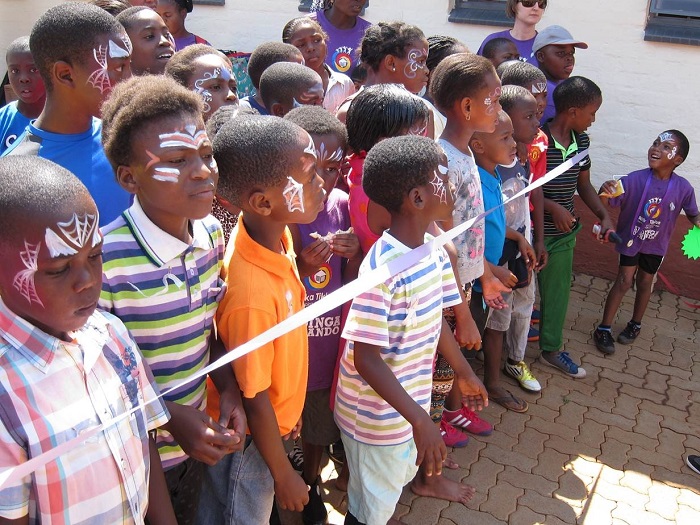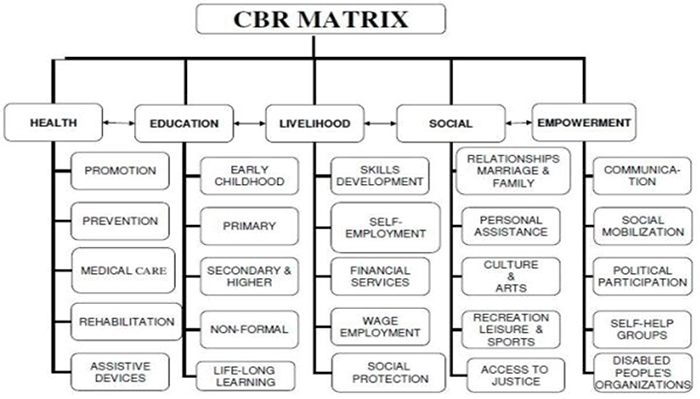 | |
| The term Community-based Rehabilitation (CBR) could be misleading | |
|
CBR is in fact less about rehabilitation and more about social justice and inclusive development. As with the WHO endorsed approach to human rights promotion by people with disabilities, CBR programmes should essentially be steered by people with disabilities and their families themselves, albeit with some technical external support. The participants in CBR programmes identify issues in their communities that affect them, and take part in planning action, executing their plan and reflecting on the outcomes. Some examples of issues that CBR might tackle include increasing access for children with disabilities to school, tackling discriminatory social norms surrounding disability, or working together to create economic opportunities. CBR as a strategy has developed well beyond the health sector, and CBR programmes might choose to implement any combination of the elements from the CBR Matrix (see diagram below) with either a health, education, livelihoods, social or empowerment focus. | |
 | |
|
Furthermore:
CBR is not about providing ad hoc therapy services to people who have poor access to quality healthcare services. In fact, hands-on therapy skills are only of use to CBR programmes that implement elements from the health component of the CBR Matrix.
| |
|